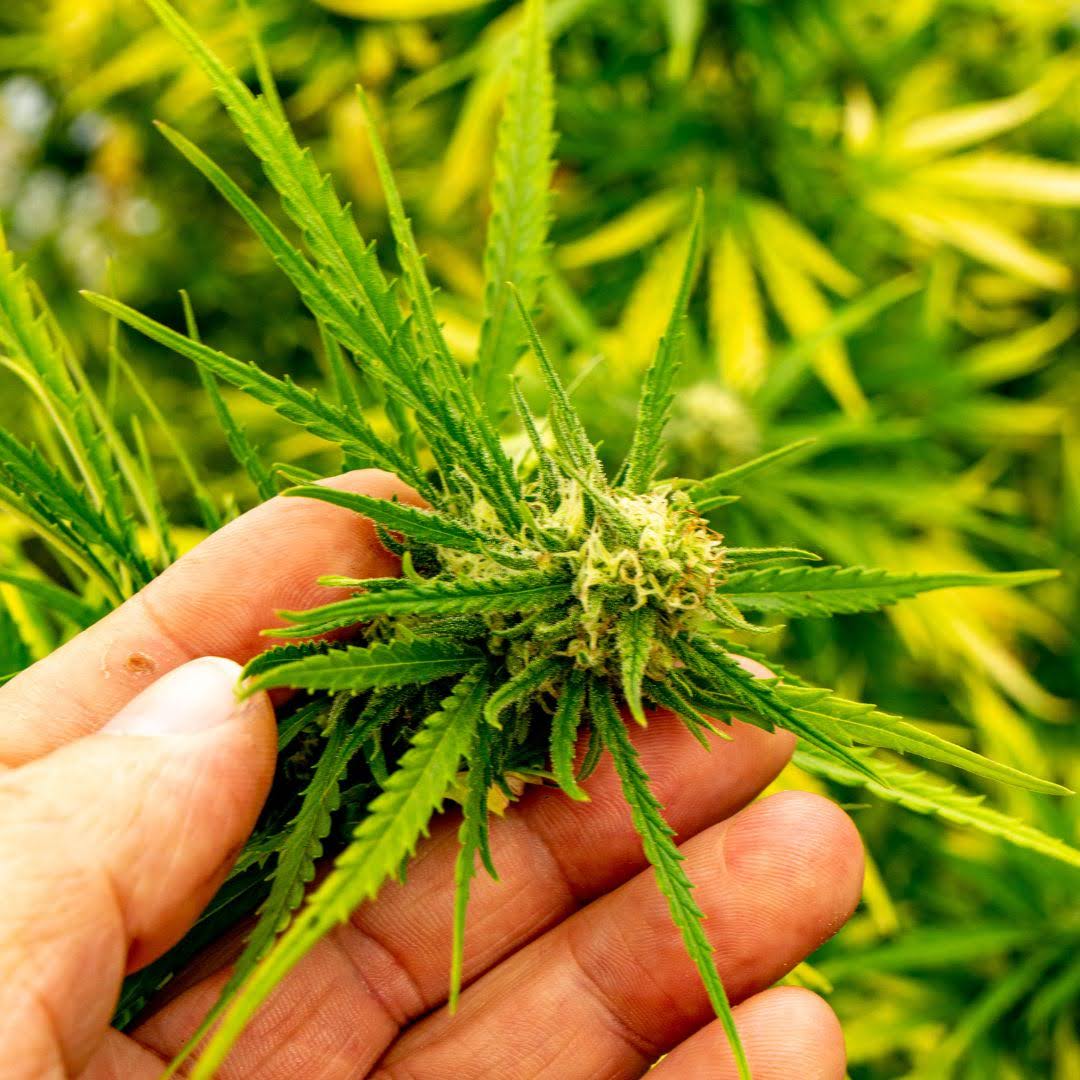Key Takeaways:
- CBDV's Potential for Epilepsy: CBDV has emerged as a promising cannabinoid for treating epilepsy, showing the potential to reduce seizure frequency in drug-resistant forms of the condition, without the psychoactive effects associated with THC.
- Safety and Side Effects: Early research suggests CBDV has a favorable safety profile with minimal side effects, making it a compelling alternative to traditional epilepsy medications, especially for long-term treatment plans.
- Legal and Accessibility Challenges: The legal status and availability of CBDV vary, impacting access for those seeking it as a treatment option. Patients interested in CBDV should consult healthcare professionals and stay informed about local regulations.
Chill Frog CBD stands as a leader in innovative health solutions, focusing on the needs of those with epilepsy. This article presents Cannabidivarin (CBDV) as a potential game-changer in treating epilepsy. We'll cover what CBDV is, its effectiveness compared to current treatments, and what future research is needed. Our commitment to natural wellness drives us to uncover and share the benefits of CBDV. By providing an in-depth look at CBDV's role, we aim to offer hope and new options for treatment. As pioneers in the CBD industry, we're excited about CBDV's potential to improve lives. Learn with us about the promising role of CBDV in epilepsy treatment.
Experience the purest form of wellness with Chill Frog CBD. Our range of CBD products is crafted to support your health journey naturally and effectively.

Understanding Epilepsy And Current Treatments
The Basics Of Epilepsy
Epilepsy is a neurological condition characterized by recurrent, unprovoked seizures. It can affect individuals of any age, with symptoms and severity varying widely among patients. The cause of epilepsy is often unknown, but it can be linked to genetic factors, brain trauma, or diseases. Diagnosing epilepsy involves a thorough review of medical history, neurological examinations, and tests like EEGs. Treatment focuses on managing seizures, often through medication, to improve quality of life.
Current Treatment Options
Epilepsy treatments aim to control or reduce the frequency of seizures. Antiepileptic drugs (AEDs) are the most common treatment, but their effectiveness varies. Some patients may undergo surgical procedures if medication does not provide control. Side effects from treatments can affect a patient's quality of life. Researchers continue to seek new, more effective treatments with fewer side effects.
What Is CBDV?
Cannabidivarin Explained
Cannabidivarin (CBDV) is a non-intoxicating cannabinoid found in the cannabis plant. It shares a similar structure with CBD but has distinct properties and potential therapeutic benefits. CBDV is particularly noted for its potential in treating neurological disorders like epilepsy. Unlike THC, CBDV does not produce psychoactive effects, making it a candidate for medical use. Research into CBDV is ongoing, aiming to unlock its full therapeutic potential.
Potential Therapeutic Properties
CBDV has shown promise in early research for its anticonvulsant effects, which could be beneficial for treating epilepsy. Studies suggest it may also help with other conditions, including autism spectrum disorders and inflammation. Its mechanism involves interacting with the endocannabinoid system in the brain, though research is ongoing to understand this fully. CBDV's potential for minimal side effects compared to traditional epilepsy medications is particularly appealing. Ongoing studies aim to confirm these benefits and how best to use CBDV therapeutically.
The Science Behind CBDV And Epilepsy
How CBDV Works In The Brain
CBDV impacts the brain's endocannabinoid system, which plays a key role in regulating neuronal excitability. By modulating this system, CBDV may help to stabilize neural activity and prevent seizures. Its action differs from traditional epilepsy drugs, potentially offering a new approach to treatment. Research is focused on understanding the specific pathways through which CBDV operates. This could lead to more targeted and effective treatments for epilepsy.
Research Findings On CBDV And Seizure Control
Preliminary research into CBDV has shown promising results in reducing seizure frequency in epilepsy models. These studies suggest that CBDV may be effective for individuals with drug-resistant epilepsy. Clinical trials are needed to confirm these findings and determine optimal dosages. The safety profile of CBDV appears favorable, with few reported side effects. Continued research is critical to understand CBDV's potential in epilepsy treatment fully.
Benefits Of CBDV For Epilepsy Treatment
Advantages Of Traditional Treatments
CBDV offers a natural alternative to traditional epilepsy medications, which often come with significant side effects. Its potential for treating drug-resistant epilepsy could fill a significant gap in current treatment options. CBDV's non-intoxicating nature makes it a safe option for patients. Research suggests it could also offer benefits beyond seizure control, such as improving mood and cognitive function. These advantages make CBDV an exciting area of research in epilepsy treatment.
Future Research Directions
The future of CBDV in epilepsy treatment is dependent on ongoing and future research. Studies are needed to establish effective dosages, understand long-term effects, and explore its use in different types of epilepsy. Research will also focus on how CBDV can be integrated into existing treatment plans. The development of standardized, high-quality CBDV products will be crucial for clinical use. Continued investment in research will be key to unlocking CBDV's full potential in epilepsy care.
Legal And Accessibility Considerations
Current Legal Status
The legal status of CBDV is complex and varies by location, impacting access for patients. In regions where medical cannabis is legal, CBDV products may be more readily available. Legal restrictions can affect research efforts and the development of CBDV-based treatments. Patients should stay informed about their local laws regarding CBDV. Advocacy for clearer regulations could improve access to CBDV for epilepsy treatment.
Availability Of CBDV Products
The availability of CBDV products is increasing, but quality can vary. Consumers should look for products from reputable sources that provide detailed information on CBDV content. Third-party testing for purity and contaminants is essential for safety. Access to high-quality CBDV products is crucial for those considering it for epilepsy treatment. Education on evaluating CBDV products can help patients make informed choices.
Navigating Access And Use
Accessing CBDV requires understanding local laws and the medical cannabis market. Patients should consult healthcare professionals to discuss the potential of CBDV for their condition. Quality and legal considerations should guide the selection of CBDV products. Financial and insurance factors may also affect access to CBDV treatments. Ongoing changes in cannabis regulation may improve access to CBDV for patients with epilepsy.
What To Look For In CBDV Products?
Quality And Purity
Quality and purity are critical when selecting CBDV products for medical use. Reputable manufacturers provide transparent information about sourcing, manufacturing, and testing. Third-party lab results should confirm the CBDV content and absence of harmful contaminants. High-quality products ensure safety and efficacy for patients. Patients should prioritize products with clear labeling and proof of testing.
Concentration And Dosage
Understanding the concentration of CBDV in products is essential for dosing. Labels should indicate the amount of CBDV per dose. Starting with a lower dose and adjusting based on response is recommended. Consistent dosing is important for managing epilepsy symptoms effectively. Healthcare providers can offer guidance on dosing strategies for CBDV.
Formulation And Delivery Methods
Different formulations and delivery methods can affect the effectiveness of CBDV. Oils, capsules, and other forms offer various advantages and considerations. The choice should align with individual needs and lifestyle preferences. Understanding how formulations affect absorption and onset of effects is important. Patients may need to try different forms to find the most effective option for their epilepsy treatment.
Final Thoughts On CBDV For Epilepsy
CBDV represents a promising direction for epilepsy treatment, offering a natural alternative to traditional medications. Its potential benefits, including a favorable safety profile and effectiveness in drug-resistant epilepsy, warrant further research. As the legal landscape evolves, access to CBDV for patients could improve. Continued research and development are crucial for understanding how CBDV can best serve those with epilepsy. Patients considering CBDV should consult with healthcare professionals to make informed decisions about their treatment.

Read Also:
- CBG Gummies: A Tasty Solution For Digestive Wellness
- THCP: The Next Big Thing In Natural Pain Relief
- Autism And CBDV: Understanding The Connection And Benefits
Frequently Asked Questions About CBDV For Epilepsy
Is CBDV the same as CBD?
No, CBDV (Cannabidivarin) and CBD (Cannabidiol) are different compounds found in the cannabis plant. They share similar properties but have distinct chemical structures and potential therapeutic effects, with CBDV showing particular promise for epilepsy treatment.
Can CBDV get you high?
No, CBDV is non-psychoactive, meaning it does not produce the "high" associated with THC, another compound found in cannabis. This makes it a suitable option for medical use, including in children and adults with epilepsy.
How is CBDV administered for epilepsy?
CBDV can be administered in various forms, including oral oils, capsules, and as an additive in food products. The choice depends on the patient's preferences, lifestyle, and the specific recommendations of a healthcare provider.
Is CBDV legal everywhere?
The legal status of CBDV varies by country and, in some cases, by state or region within countries. It often falls under the broader laws governing cannabis and hemp products. Patients should check their local regulations regarding CBDV.
Does insurance cover CBDV treatments?
Coverage for CBDV treatments varies by insurance company and policy. Currently, many insurers do not cover cannabis-derived products, but this is subject to change as legal statuses evolve and more evidence supports CBDV's efficacy.
Are there any side effects of using CBDV for epilepsy?
Early research suggests that CBDV has a favorable safety profile with minimal side effects, especially compared to traditional epilepsy medications. However, as with any treatment, individuals may experience varying responses.
Can CBDV be used in combination with other epilepsy medications?
Preliminary research indicates that CBDV could be used alongside other epilepsy medications, but it's crucial to do so under the guidance of a healthcare provider to avoid potential interactions.
How quickly does CBDV work to control seizures?
The onset of action for CBDV can vary based on the form used and individual patient factors. Some may notice improvements quickly, while for others, it may take longer to observe a significant reduction in seizure frequency.
Can CBDV cure epilepsy?
CBDV is not a cure for epilepsy but has shown promise in managing seizures, especially in drug-resistant forms of the condition. It is part of a comprehensive treatment plan aimed at reducing seizure frequency and improving quality of life.
How can I start using CBDV for epilepsy?
Starting treatment with CBDV should involve a consultation with a healthcare provider experienced in epilepsy care and, if possible, knowledgeable about medical cannabis. They can recommend appropriate dosage and form based on individual needs and local laws.
Sources:
- Jefferys, J. G. R. (2010). Advances in understanding basic mechanisms of epilepsy and seizures. Seizure, 19(10), 638–646. https://doi.org/10.1016/j.seizure.2010.10.026
- Pretzsch, C. M., Voinescu, B., Lythgoe, D., Horder, J., Mendez, M. A., Wichers, R., Ajram, L., Ivin, G., Heasman, M., Edden, R. A. E., Williams, S., Murphy, D. G. M., Daly, E., & McAlonan, G. M. (2019). Effects of cannabidivarin (CBDV) on brain excitation and inhibition systems in adults with and without Autism Spectrum Disorder (ASD): a single dose trial during magnetic resonance spectroscopy. Translational Psychiatry, 9(1). https://doi.org/10.1038/s41398-019-0654-8
- Lourenço, D. M., Ribeiro-Rodrigues, L., Sebastião, A. M., Diógenes, M. J., & Xapelli, S. (2020). Neural Stem Cells and Cannabinoids in the Spotlight as Potential Therapy for Epilepsy. International Journal of Molecular Sciences, 21(19), 7309. https://doi.org/10.3390/ijms21197309